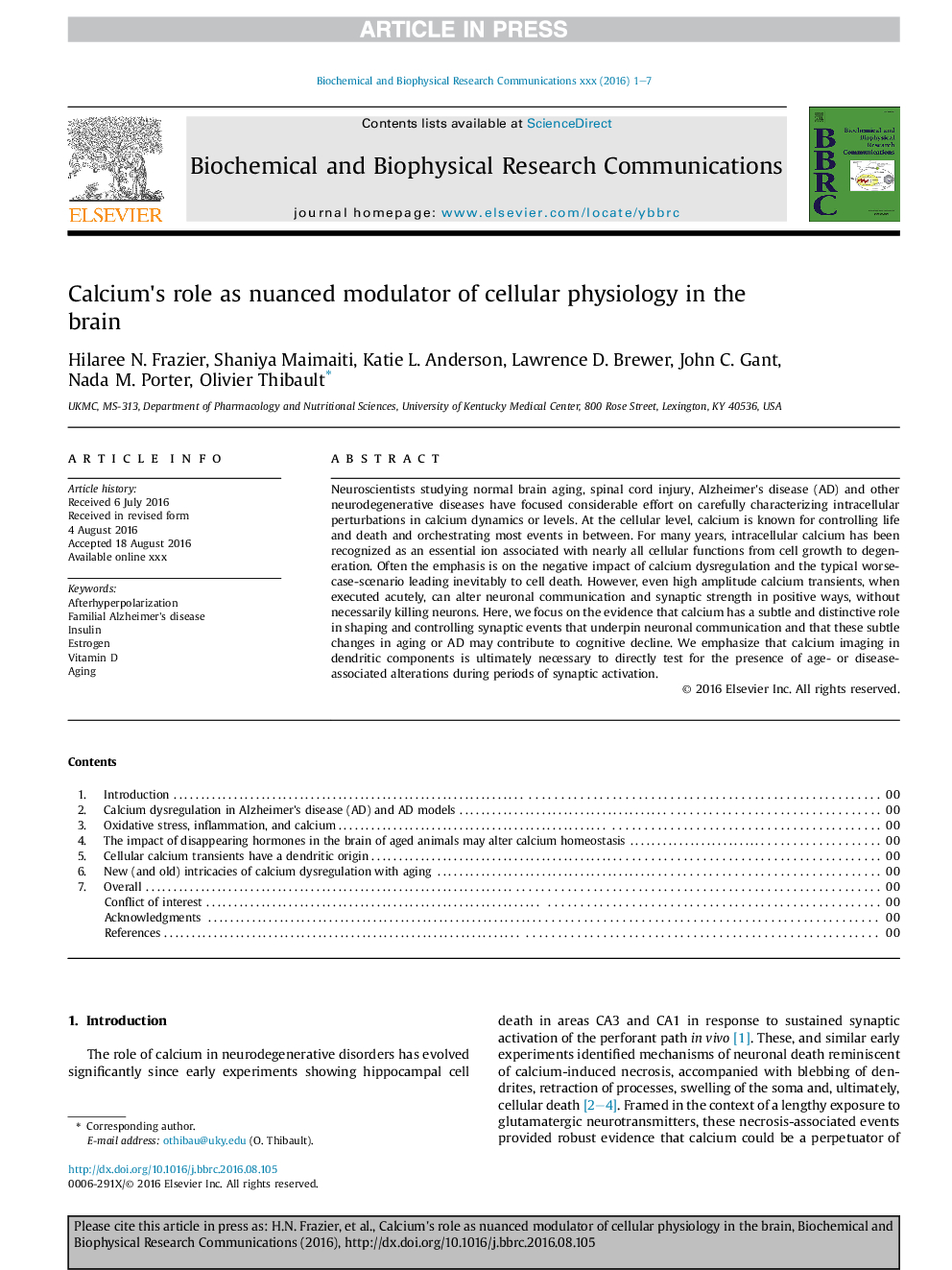| Article ID | Journal | Published Year | Pages | File Type |
|---|---|---|---|---|
| 5506413 | Biochemical and Biophysical Research Communications | 2017 | 7 Pages |
Abstract
Neuroscientists studying normal brain aging, spinal cord injury, Alzheimer's disease (AD) and other neurodegenerative diseases have focused considerable effort on carefully characterizing intracellular perturbations in calcium dynamics or levels. At the cellular level, calcium is known for controlling life and death and orchestrating most events in between. For many years, intracellular calcium has been recognized as an essential ion associated with nearly all cellular functions from cell growth to degeneration. Often the emphasis is on the negative impact of calcium dysregulation and the typical worse-case-scenario leading inevitably to cell death. However, even high amplitude calcium transients, when executed acutely, can alter neuronal communication and synaptic strength in positive ways, without necessarily killing neurons. Here, we focus on the evidence that calcium has a subtle and distinctive role in shaping and controlling synaptic events that underpin neuronal communication and that these subtle changes in aging or AD may contribute to cognitive decline. We emphasize that calcium imaging in dendritic components is ultimately necessary to directly test for the presence of age- or disease-associated alterations during periods of synaptic activation.
Related Topics
Life Sciences
Biochemistry, Genetics and Molecular Biology
Biochemistry
Authors
Hilaree N. Frazier, Shaniya Maimaiti, Katie L. Anderson, Lawrence D. Brewer, John C. Gant, Nada M. Porter, Olivier Thibault,
